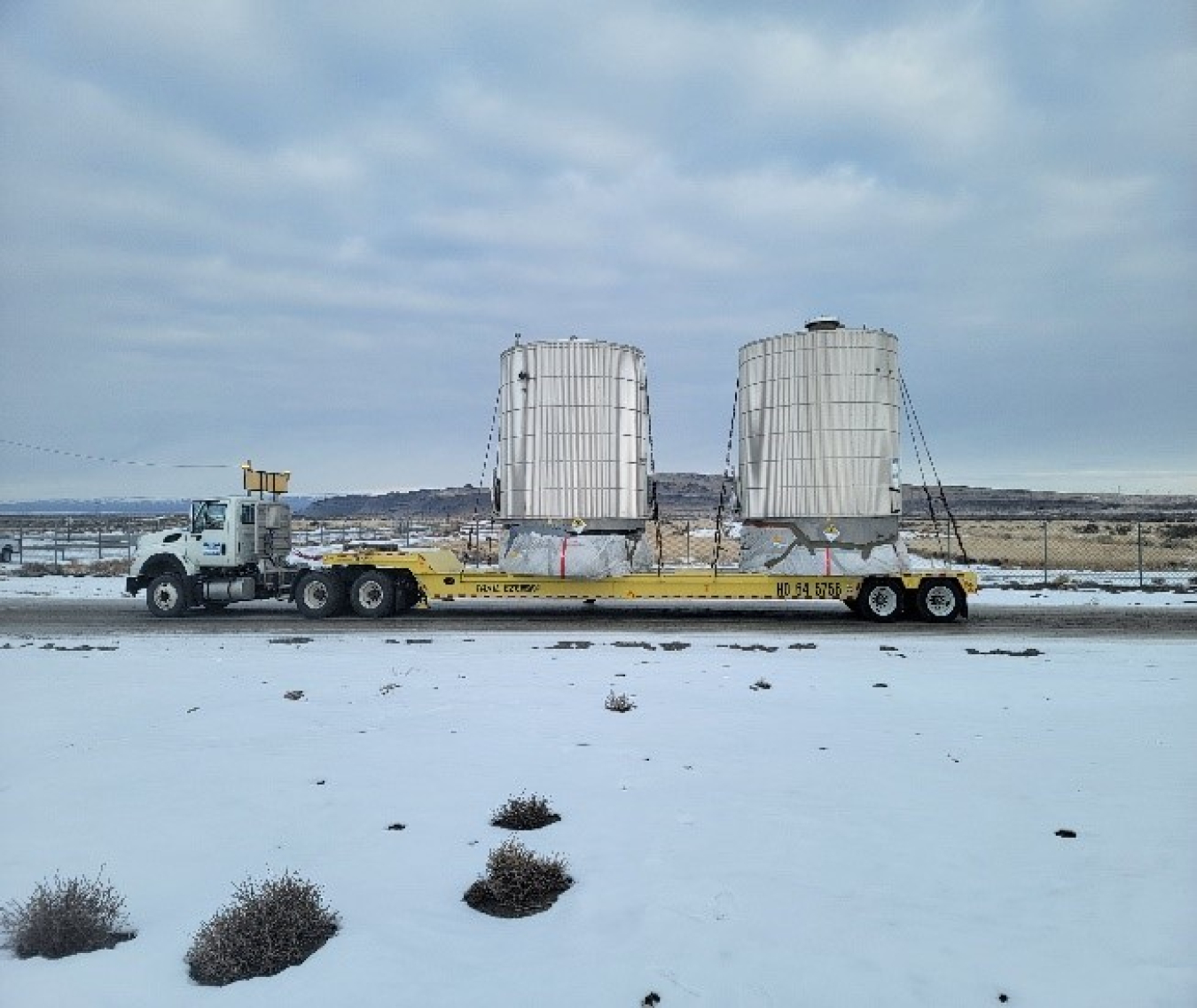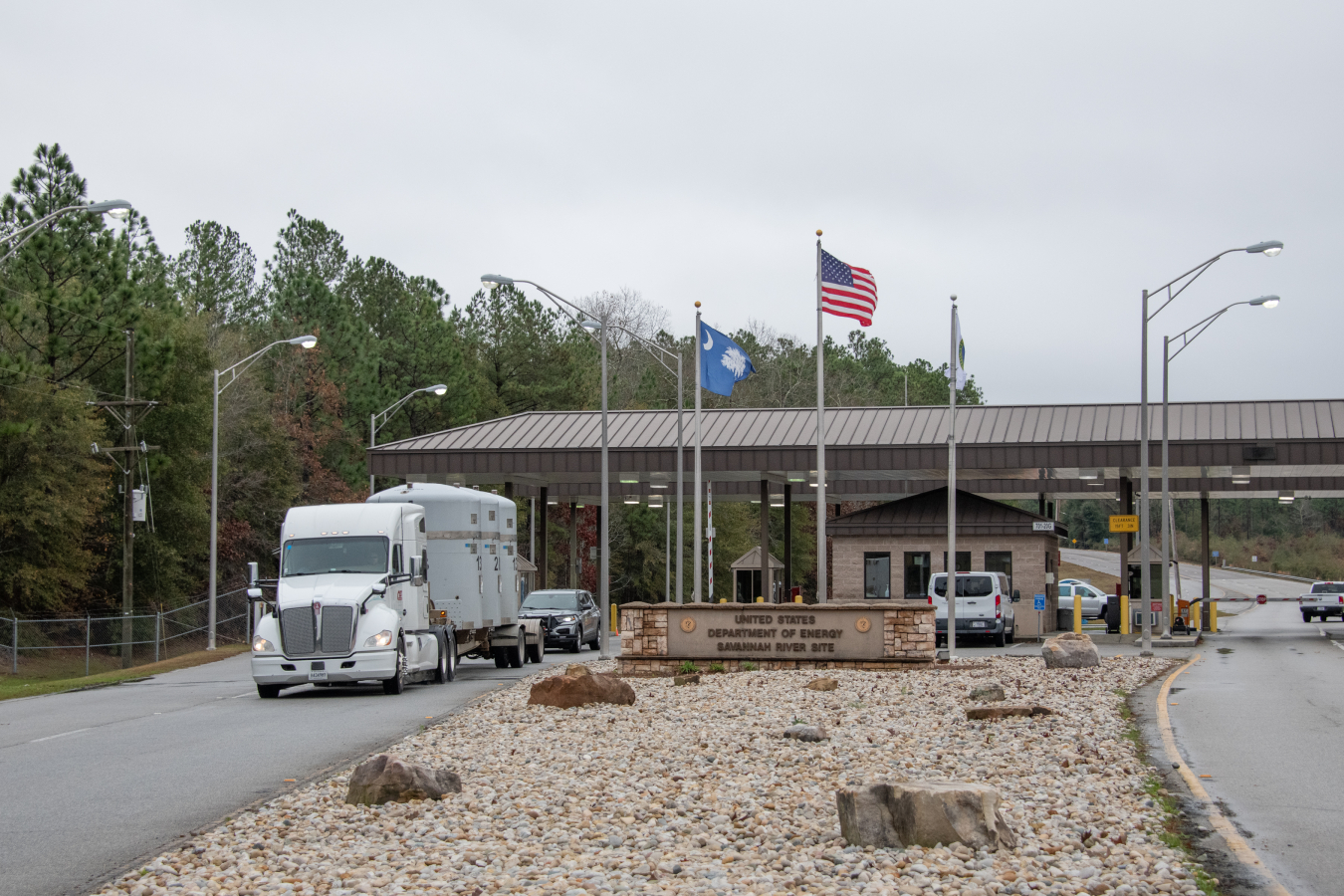Safe packaging and transportation of materials is critical to the success of DOE operations. Annually, DOE transports about 5,000 shipments including radioactive, hazardous, and non-hazardous materials. EM supports field sites in achieving safe transportation through development and management of policy, oversight programs, automated tools, and collaborative forums. These programs and tools are available to the entire DOE complex.

Packaging Certification Program
The Atomic Energy Act of 1954, as amended, gives DOE broad authorities to regulate all aspects of activities involving radioactive materials that are undertaken by DOE or on its behalf, including transportation. EM manages the program for the packaging certification of Type B and fissile material packaging which conform with U.S. Department of Transportation and U.S. Nuclear Regulatory Commission requirements. For additional information about the DOE Packaging Certification Program, visit the Radioactive Material Packaging (RAMPAC) website. The program includes the following:
- Providing guidance for preparing Safety Analysis Reports for Packaging;
- Reviewing and approving packaging designs;
- Issuing DOE Certificates of Compliance;
- Reviewing and recertifying Certificates of Compliance;
- Curtailing and suspending the use of specific packages, when warranted; and
- Reviewing and approving quality assurance programs for Type B and fissile materials radioactive materials packaging.
The Packaging Certification Program conducts routine training for radioactive packaging activities related to Safety Analysis Report for Packaging preparation and packaging quality assurance, maintenance and operations.
Packaging and Transportation News

Automated Tools
(Note that these tools require account access and are generally limited to DOE users, contractors, and certain stakeholders.)
The Automated Transportation Logistics and Analysis System is a web-based freight management system allowing users to manage inbound and outbound shipments by highway, rail, and air.
The Transportation Routing Analysis GIS allows users to analyze potential routes for shipment of hazardous materials including nuclear material and spent nuclear fuel. It is compatible with the NRC’s RADTRAN software for performing population risk assessments and accident dosing models.
An unclassified tracking and communication system which can monitor the progress of various "high visibility" shipments.
Stakeholder Engagement
National Transportation Stakeholders Forum (NTSF)
Collaboration and coordination with jurisdictions along the transportation corridors is key in accomplishing the EM cleanup mission. The purpose of the NTSF is to bring transparency, openness, and accountability to DOE's offsite transportation activities through collaboration with state and tribal governments. NTSF members may obtain additional information at the NTSF website.
Transportation Emergency Preparedness Program (TEPP)
TEPP provides the tools for planning, training and exercises, and technical assistance to assist state and Tribal authorities in preparing for response to a transportation incident involving DOE shipments of radioactive material. For more information including class schedule, please visit the TEPP website.
Oversight and Support Programs
Motor Carrier Evaluation Program (MCEP)
EM manages and implements the DOE MCEP in accordance with DOE Order 460.2B, Departmental Materials Transportation Management, maintains and monitors a list of evaluated motor carriers from which DOE/NNSA field offices and contractors select to ship their radioactive materials and hazardous wastes.
Transportation Compliance Assessment Program (TCAP)
In accordance with DOE Order 460.2, Departmental Materials Transportation and Packaging Management, DOE sites must evaluate contractors/subcontractor transportation and packaging operations at each facility every three years. TCAP provides a framework for accomplishing these evaluations.
Transportation Management Council (TMC) and Packaging Management Council (PMC)
EM serves as federal sponsor and advisor for DOE's TMC and PMC. Membership is made up of DOE and NNSA federal and contractor personnel involved in transportation and packaging operations. TMC provides a forum to address challenges and best practices in shipping operations and transportation safety activities. PMC provides a similar forum for DOE packaging activities.
Feedback
Any comments, questions, or concerns related to DOE packaging and transportation programs may be sent to askpat@hq.doe.gov. DOE’s Office of Packaging and Transportation actively monitors this mailbox and will respond to all inquiries as soon as possible.


